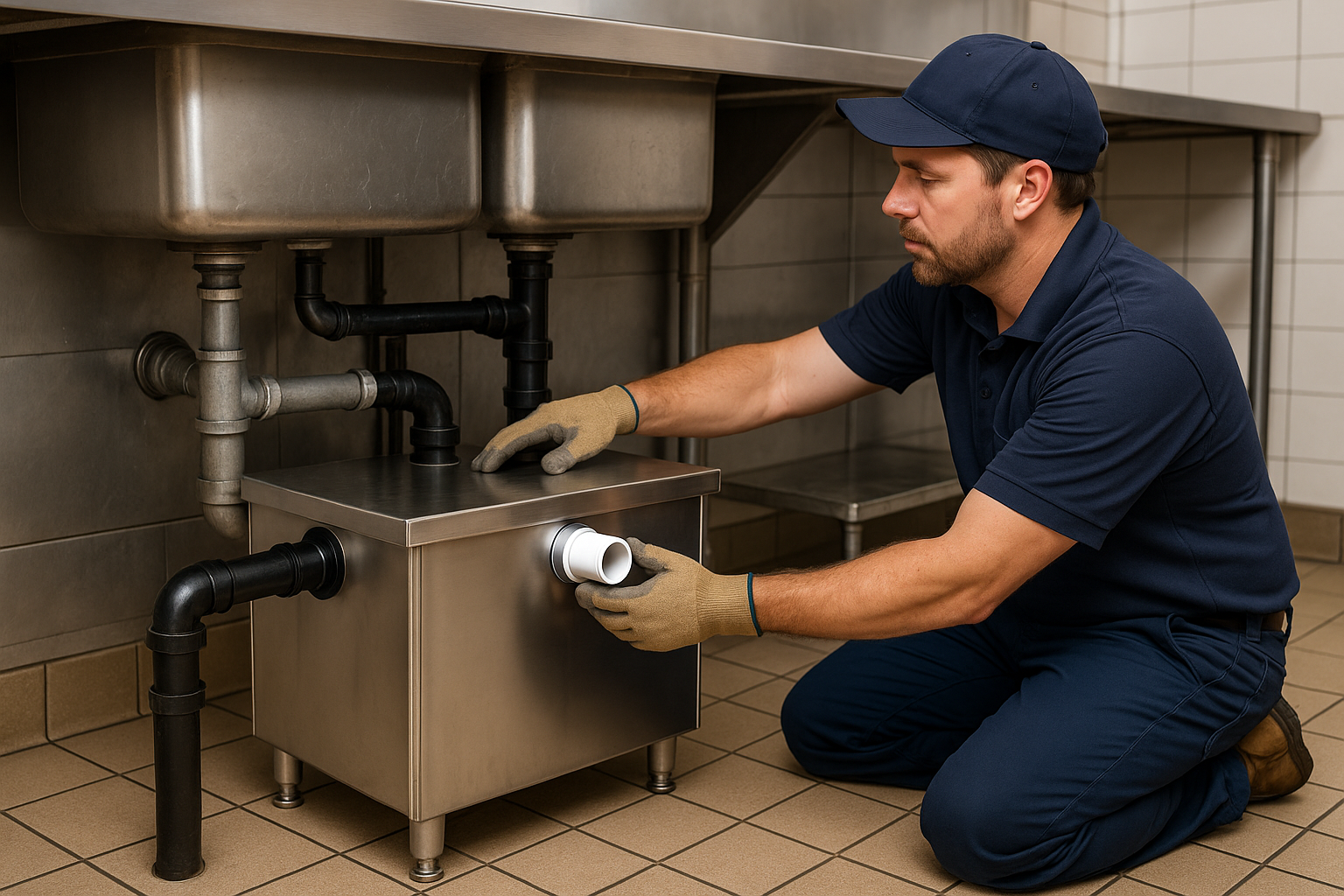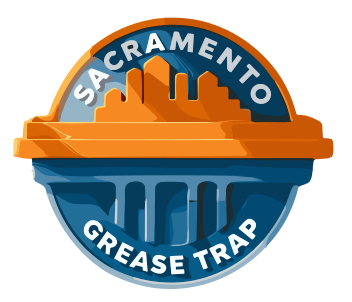Grease Trap Installation Requirements You Must Follow

Why Grease Trap Installation Rules Matter for Sacramento Businesses
If you own a restaurant or commercial kitchen in Sacramento, one small but crucial piece of equipment keeps your business compliant: the grease trap. Neglecting proper grease trap installation can lead to costly fines, plumbing backups, and even forced closures. Yet, many local business owners underestimate the importance of following the city’s strict FOG (Fats, Oils, and Grease) program requirements.
Whether you’re opening a new café or upgrading your plumbing system, understanding the installation process, sizing standards, and permit rules ensures your operation runs smoothly. This guide breaks down everything you need to know about grease traps installation in Sacramento — from permits and inspections to long-term maintenance and compliance.
Understanding Grease Trap Installation Regulations in Sacramento
Every food establishment in Sacramento that generates wastewater containing grease must have a properly installed and maintained grease trap or interceptor. This isn’t just a plumbing suggestion, it’s a legal requirement under the city’s FOG Ordinance.
Why Proper Installation Matters
Improper or incomplete installation of your grease trap can:
- Cause severe drain blockages and backups
- Result in fines, shutdowns, or legal penalties
- Increase long-term plumbing repair and maintenance costs
Key Benefits of Compliance
- Prevents costly plumbing emergencies
- Protects Sacramento’s wastewater infrastructure
- Ensures smooth inspections and operation approvals
Grease trap installation Sacramento guidelines also require traps to meet size, flow rate, and accessibility criteria. Misjudging any of these factors could mean expensive retrofits or rejected permits later.
For an in-depth look at grease trap sizing, visit our Grease Trap Sizing Guide.
Step-by-Step Guide to Grease Trap Installation in Sacramento
Proper installation is a combination of planning, permitting, and professional execution. Whether you’re curious about how to install grease trap systems or simply want to understand compliance, this breakdown covers it all.
Step 1: Determine If Your Facility Requires a Grease Trap
Most commercial kitchens in Sacramento — including restaurants, bakeries, and cafeterias — are required to install a grease trap.
Purpose: Identify your facility’s requirement under Sacramento County’s FOG Program.
Details:
- Any business discharging grease-laden wastewater must have a grease interceptor.
- Residential properties generally do not require one.
Pro Tip: Contact the Sacramento County Environmental Management Department (EMD) before installing a grease trap to confirm your classification.
Step 2: Calculate the Proper Grease Trap Size
Purpose: Ensure your system efficiently separates grease without overflowing.
Instructions:
- Sizing depends on your kitchen’s flow rate (gallons per minute).
- Refer to the California Plumbing Code (CPC) for formula-based sizing.
- Typical restaurant interceptors range from 500–1500 gallons.
Pro Tip: Oversizing increases your grease trap installation cost, while undersizing risks noncompliance.
If you’re unsure, use a professional calculator on Smartsheet or consult your plumbing engineer.
Step 3: Obtain the Required Permits
Purpose: Stay compliant before construction begins.
Instructions:
- Submit plumbing plans to Sacramento County EMD for approval.
- Apply for a Building Permit and, if applicable, a Wastewater Discharge Permit.
- Coordinate with your plumber to ensure installation matches the approved design.
Note: Permit reviews can take 2–4 weeks, so plan ahead to avoid delays.
Step 4: Select a Licensed Grease Trap Installer
Purpose: Ensure a compliant and high-quality installation.
Instructions:
- Hire a licensed C-36 plumbing contractor experienced in commercial grease trap installation.
- Verify past installations and client reviews.
- Request documentation including trap capacity, material specs, and compliance certifications.
Pro Tip: Avoid unlicensed installers — Sacramento inspectors can reject your setup for noncompliance.
If you’re searching for “grease trap installation near me,” choose a local Sacramento specialist who knows regional codes and inspection requirements.
Step 5: Schedule an On-Site Inspection
Purpose: Confirm your trap meets city standards.
Instructions:
- After installation, schedule inspection with the Sacramento County EMD.
- Inspectors check inlet/outlet flow, sealing, and venting compliance based on the grease trap installation diagram.
- Systems must remain accessible for future cleaning and recordkeeping.
Pro Tip: Keep logs and cleaning records ready — inspectors frequently review them.
Step 6: Maintain Your Grease Trap Regularly
Purpose: Extend your system’s lifespan and stay compliant.
Instructions:
- Clean every 30–90 days depending on kitchen usage.
- Record each cleaning, including the date, waste volume, and hauler info.
- Hire licensed pumpers under the Sacramento FOG Hauler Program.
Pro Tip: Schedule routine Grease Trap Cleaning and Grease Trap Pumping to prevent costly emergency services later.
Common Compliance Issues and How to Avoid Them
Even with proper grease trap install practices, some businesses still face compliance challenges. Here’s how to stay ahead:
Inadequate Sizing of Grease Interceptors
Undersized traps overflow quickly, sending grease into city sewers.
Fix: Reassess sizing per CPC Section 1014 or install a larger unit.
Poor Access or Improper Location
When traps aren’t accessible, cleaning becomes nearly impossible.
Fix: Place units near dishwashing stations and ensure lids remain visible.
Lack of Recordkeeping
City inspectors require detailed cleaning logs.
Fix: Use digital tracking tools like HubSpot to manage your logs efficiently.
Unapproved Installations
Installing without permits can result in fines or forced removal.
Fix: Always secure official approval before breaking ground.
Real-World Applications of Proper Grease Trap Installation
When correctly installed, grease traps make compliance and maintenance effortless.
Use Case 1 – Restaurant Chains
A downtown bistro upgraded its 250-gallon trap to a 1000-gallon interceptor, reducing plumbing backups by 70% and achieving full compliance with the FOG program.
Use Case 2 – Cafeterias and Schools
A Sacramento high school cafeteria added an outdoor interceptor during renovation. FOG levels dropped below 100 mg/L, passing inspection immediately.
Use Case 3 – Food Trucks and Small Cafes
Compact indoor traps meet discharge standards while saving valuable space.
These examples show that proper commercial grease trap installation leads to sustainability and fewer compliance headaches.
Expert Tips to Ensure Grease Trap Compliance in Sacramento
Compliance is an ongoing commitment. Follow these pro tips:
- Document Everything: Keep logs and receipts for at least three years.
- Train Staff: Teach proper disposal and cleaning practices.
- Partner with Local Experts: Collaborate with Sacramento-based providers familiar with local FOG codes.
- Monitor for Odors or Slow Flow: Catch issues early to prevent emergencies.
- Schedule Routine Inspections: Don’t wait for violations to appear.
For restaurant owners, our F.O.G. Best Practices resource offers step-by-step preventive care.
Stay Compliant and Keep Your Kitchen Running Smoothly
Grease trap installation Sacramento requirements aren’t just bureaucratic red tape — they’re safeguards for your business and the city’s wastewater systems. Following the correct installation process, from design and permitting to inspection and maintenance, ensures your kitchen stays efficient and compliant.
Ready to get started? Contact a certified Sacramento installer today to discuss the cost to install grease trap systems and view our commercial grease trap installation diagram to plan your next project with confidence.
Frequently Asked Questions (FAQs)
1. Do all Sacramento restaurants need a grease trap?
Yes. Any business that discharges grease-laden wastewater must install an approved interceptor under city regulations.
2. How often should I clean my grease trap?
Typically every 1–3 months, depending on use and size.
3. Can I install a grease trap myself?
No. Sacramento requires installation by a licensed contractor to ensure compliance.
4. What happens if my trap fails inspection?
You’ll receive a notice to correct violations. Noncompliance can lead to fines or service suspensions.
5. How do I size my grease trap correctly?
Refer to CPC sizing formulas or consult a local engineer for accurate guidance.
For more information, check EPA.gov, Forbes for cost insights, and SacramentoCounty.gov for official regulations.

Let Us Simplify Your Grease Trap Maintenance.
Proper grease trap maintenance will reduce costly repairs in the future.
.avif)

